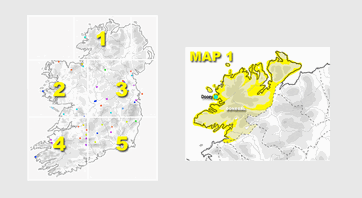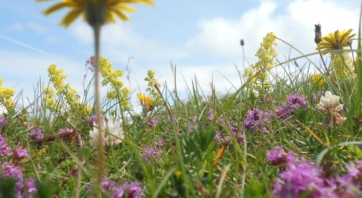
Irish Walled Towns Network
Formed by the Heritage Council in 2005, the role of the IWTN is to help the Walled Towns of Ireland become better places in which to live, work and visit.

The Heritage Council is committed to addressing climate change by supporting Ireland’s national climate goals and integrating climate action into the conservation of the country’s natural, built, and cultural heritage.
The Heritage Council is committed to addressing climate change by supporting Ireland’s national climate goals and integrating climate action into the conservation of the country’s natural, built, and cultural heritage.
We believe that heritage conservation is a powerful tool for climate action, from the promotion of sustainable traditional crafts and construction materials to the value of habitats like wetlands in mitigating the impacts of climate change by sequestering and storing carbon while also providing resilience in dealing with flooding and extreme weather.
The Heritage Council works at national level to build the evidence base and help in the development of policies in the area of climate heritage. We are also active at the local level, working closely with our partner in local authorities to deliver practical action and translation of national policies into local action by the local authority Heritage and Biodiversity Officers.
Under the Climate Action and Low Carbon Development (Amendment) Act 2021, public bodies like the Heritage Council are required to reduce greenhouse gas emissions by 51% by 2030, to improve overall energy efficiency and to become climate neutral by 2050.
The Heritage Council’s Climate Action Roadmap outlines how we will achieve these goals. You can find detailed reports on our progress and compliance with the Public Sector Mandate on our dedicated page Reporting on Climate Action.
Heritage plays a crucial role in climate resilience. By conserving natural landscapes, traditional buildings, and cultural practices, we can adapt to and mitigate climate impacts. Sustainable conservation practices also reduce environmental footprints and enhance biodiversity.
Climate change poses significant threats to Ireland’s natural, built, and cultural heritage. Increased flooding, rising sea levels, and extreme weather events can damage historic buildings, archaeological sites, and landscapes. Shifts in temperature and humidity may lead to the deterioration of archives, collections and materials used in heritage structures, while changing ecosystems affect biodiversity. These impacts not only jeopardise the physical integrity of heritage sites but also the cultural and historical narratives they embody.
Heritage and sustainability are closely linked to global efforts under the United Nations Sustainable Development Goals (SDGs). The Heritage Council actively contributes to several key SDGs through its work in conserving Ireland's natural, built, and cultural heritage. These efforts not only protect heritage but also support sustainable cities, climate action, and biodiversity conservation. For a deeper exploration of how heritage conservation aligns with the SDGs, including specific actions and partnerships, please visit our dedicated page.
You can explore more on our reporting and initiatives on the following dedicated pages:

Formed by the Heritage Council in 2005, the role of the IWTN is to help the Walled Towns of Ireland become better places in which to live, work and visit.

Detail of significant archaeological investigations in Ireland which had not been featured widely in printed publications previous to 2004.

The Farming for Nature Technical Group was convened by the Heritage Council as part of its ongoing High Nature Value (HNV) Farming Ireland work to feed into the development of Ireland’s Common Agricultural Policy Strategic Plan 2023-2027.